About the seminar
The CCCCRC (C4RC) is a weekly seminar series highlighting trans-disciplinary research in climate change, with a goal in fostering meaningful collaboration between climate change researchers. Our aim is to use this as an exploration of the range of research related to climate change across the University of Toronto, and to inspire new collaborations. A central theme of the series is the role of computational climate models: how researchers share models, verify models, create models, and share results.
We meet on Mondays at 3PM in BA 1220, beginning January 16. All are welcome to attend.
Join our mailing list here for weekly updates, or send a blank email to c5-seminar+subscribe@googlegroups.com.
Speakers for the Term
Computing the Climate: the Evolution of Climate Models
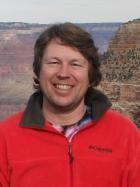
January 16, 2012
Steve Easterbrook, Department of Computer Science
Detailed projections of future climate change are created using sophisticated computational models that simulate the dynamics of the climate system. These models have evolved over the last 60 years along with scientists' understanding of the climate system. In this talk, I'll trace the history of climate modelling, from the early ENIAC weather simulations created by von Neumann and Charney, through to today's Earth System Models, in which atmosphere, ocean, vegetation and ice sheet models are coupled together to study interactions across the climate system. I'll also provide an overview of how the models are tested, and where the remaining uncertainties are. I'll end with a look at how the models are used in the assessments of climate change performed by the IPCC, and a glimpse at some new results that will be used in the IPCC's sixth assessment report, due to be published in 2014.
Building Community Resilience: A Viable Response to Climate Change and Other Emerging Challenges to Health Equity?

January 23, 2012
Blake Poland, Associate Professor, Dalla Lana School of Public Health
This talk explores how climate change intersects with several other emerging threats to health equity (ecosystem degradation, peak oil, economic instability & associated 'austerity' measures), and the extent to which building community resilience can be seen as a viable response. Two local examples (Transition Towns & the proposed Toronto Food Strategy) will be discussed.
Constraining fast and slow climate feedbacks with computer models
January 30, 2012
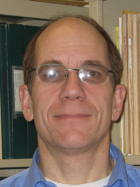
Danny Harvey, Department of Geography
The climate system responds to radiative forcings (such as changes in solar luminosity or in greenhouse gas concentrations due to human emissions) through a variety of feedback mechanisms. Some of these, such as those involving water vapour, clouds, and seasonal snow and ice, are termed "fast" feedbacks and respond within weeks to years. Others, termed "slow" feedbacks, respond on a time scale of decades to millenia and can greatly amplify the response due to fast feedbacks. Geological data can be used to constrain both fast and slow feedbacks, but this requires reconstructing both past radiative forcings and past climate conditions. Much of the evidence in based on various isotope ratios in materials found in sediments from the past (going back hundred of millions of years), but the interpretation of this evidence requires the used of models of the long term cycling of the elements and isotopes in question. The broad outlines of how this is done will be introduced in this talk.
Urban GHG Modelling Using Agent-Based Microsimulation
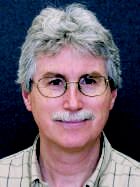
February 6, 2012
Eric J. Miller, Department of Civil Engineering
Agent-based microsimulation (ABM) provides the framework for detailed modelling of urban GHG emissions due to transportation, residential and other other urban socio-economic activities. The ILUTE (Integrated Land Use, Transportation, Environment) research team at the University of Toronto has for some time been developing a comprehensive model of urban socio-economic processes and energy use for the Greater Toronto-Hamilton Area (GTHA) within the ABM paradigm. This lecture will provide a motivation for the ABM approach to urban systems modelling, an overview of the ILUTE model system, and a discussion of the model system's cuurent state and prospects for future development and application.
Freshwater ecosystem response to climate change in the Canadian North
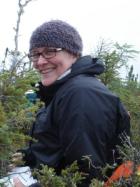
February 13, 2012
Joan Bunbury, Department of Geography
Lakes and wetlands are an important component of the northern landscape, and climate change poses a major threat to these ecosystems. Warmer temperatures and changes in precipitation regimes are expected to influence water levels, nutrients, and water chemistry, thereby altering the abundance and distribution of aquatic organisms. Paleoenvironmental records provide a unique and valuable perspective to our understanding of how these organisms and their environment have been impacted by climate change in the past, and can provide insight into what may happen under alternative climate scenarios in the future.
Quantifying the Transition to Low-Carbon Cities Associated with Technological Change

February 27, 2012
Eugene Mohareb, Department of Civil Engineering
As cities begin to address greenhouse gas (GHG) emissions occurring within their boundaries, the challenge in reducing absolute emissions becomes apparent. One key component in the transition to low-carbon cities will be the adoption of more energy efficient technologies, especially in the building and transportation sectors. Using sigmoidal diffusion curves representative of typical technology adoption, projections of regional GHG emission reductions are made using the Pathways to Urban Reductions in Greenhouse gas Emissions (PURGE) model. These suggest that current strategies to reduce emissions will not be sufficient to reach targets proposed by the IPCC's fourth assessment report. More aggressive strategies are presented to suggest what may be possible, based on approaches anticipated in prominent literature sources.
What Sociology does - and does not - contribute to understanding climate change
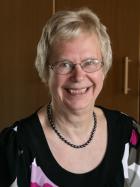
March 5, 2012
Margrit Eichler, Sociology and Equity Studies in Education
In this presentation I will explore the – largely unrealized - potential of Sociology to contribute to our understanding of climate change and what to do about it. Why are the contributions of Sociology so minimal? What could they be? I will then explore the notion of Canada as a climate criminal as one potential sociological contribution.
Beyond the Campaign: Analyzing factors that influence the persistence of behaviour change strategies

March 12, 2012
Beth Savan and Zannah Matson, Sustainability Office
There is an extensive literature documenting successful behaviour change strategies that reduce resource consumption and associated emissions through community or institutional level approaches. Often the efficacy of these programs is measured either during or shortly after interventions take place and the persistence of the initial changes over the longer term is unknown. In an examination of recent University of Toronto Sustainability Office behaviour change programs, results were measured both during and following completion of interventions. These studies found varying outcomes with regards to the persistence of resource and emission reduction behaviours. This presentation will document these campaigns and the strategies that appear to lead to these variations in long-term success. Factors including the impact of strong and supportive social networks will be examined though these case studies. This examination will be placed in the broader context of the somewhat-limited persistence literature to explore the contributors to long term changes in behaviour that lead to permanent reductions in resource consumption and greenhouse gas emissions. The authors will suggest that enduring and meaningful behaviour changes are those that encourage persistence through time and proliferation across a number of lifestyle elements to magnify the impact of one-time interventions.
Net Energy Use, Urban Density and Solar Buildings
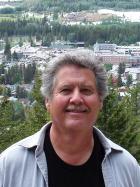
March 19, 2012
Ted Kesik, John H. Daniels Faculty of Architecture, Landscape and Design
The Greater Golden Horseshoe is predicted to experience a population increase of nearly 4 million people between 2006 and 2031, and it remains uncertain how this growth will impact greenhouse gas emissions. A significant question about the future of greenhouse gas emissions involves the relationship between net energy use for buildings and transportation as a result of various urban and suburban development models. Advocates of renewable energy predict solar building technologies will enable buildings to harvest and/or generate much, if not all, of their energy and possibly a surplus to power electric vehicles. This presentation looks at the early stages of research aimed at developing comprehensive, predictive models about energy use that accounts for existing and forecast population densities. The focus is on the challenges of dealing with the computational complexities of predicting net energy use for buildings and transportation under various scenarios, acknowledging that the efficiency of both energy generating and consuming technologies is in a state of constant evolution. Until robust and reliable models are developed, it is argued the implementation of effective energy and development policies aimed at sustainable growth and the environmentally responsible management of greenhouse gas emissions is severely limited.
Measuring atmospheric composition: combining hardware and software to understand our changing atmosphere
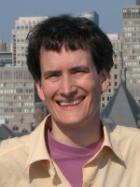
March 26, 2012
Kimberly Strong, Department of Physics
Spectroscopic techniques provide a powerful method for measuring atmospheric composition. My research group uses UV-visible and infrared spectrometers in Toronto and the Arctic for studies of climate change, ozone depletion, and air quality. The retrieval of trace gas abundances from the spectra recorded by these instruments relies on sophisticated computer algorithms. In this talk, I will describe how we acquire and analyze our measurements to derive meaningful information about the atmosphere. I will also present some results from the University of Toronto Atmospheric Observatory (TAO) and the Polar Environment Atmospheric Research Laboratory (PEARL). For the former, I will show how we interpret our measurements of pollutants using a chemical transport model, while for PEARL, I will discuss how we combine our measurements with atmospheric models to quantify chemical ozone depletion.
\Hosts
The C4RC is brought to you by the Department of Computer Science, and the Centre for Environment.
Contact information
For questions, information, or to sign up or nominate a speaker, contact patitsas at cs dot toronto dot edu.

